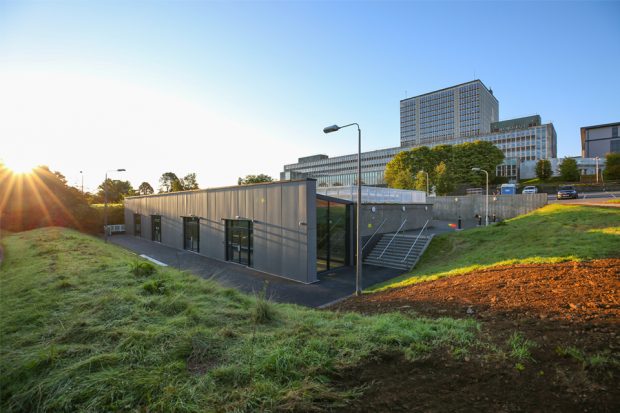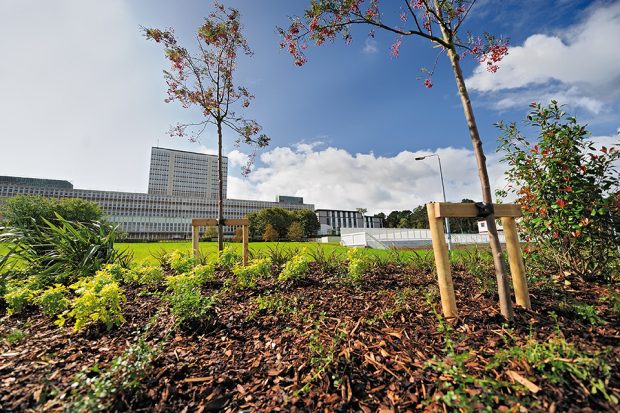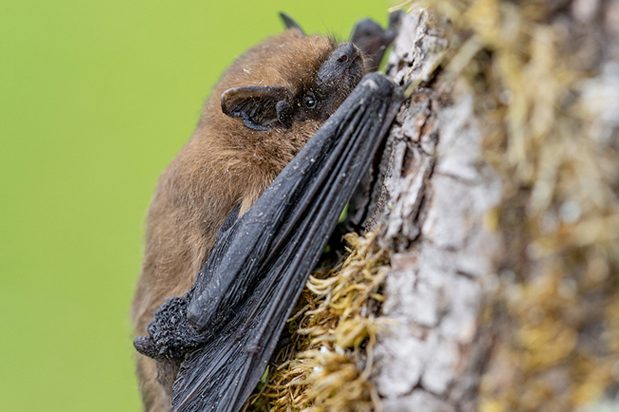Bats, bees and trees: DVLA’s latest biodiversity action plan
The recent publication of our fourth Biodiversity Action Plan (BAP) marks another milestone in our commitment towards a more sustainable future. Although it focuses on our specific aims for the next few years, together with our new Sustainability Report, the BAP also ensures that decisions about the future of DVLA will include the development of biodiversity across our estate.
Whilst publishing the plan is not a legal requirement for the agency, it does help us stay compliant with legislation and government targets. Meeting targets is not the only reason for doing this though. We recognise that biodiversity is vitally important in fighting climate change, and in ensuring good health and well-being within our local community and further afield. The plan supports our commitment to ensure we address these related challenges of public health, climate change and biodiversity, both now and for future generations.

The DVLA estate includes three sites in the Swansea area which provide a variety of different habitats including urban and industrial. We’re proud of the progress we have made in the development of biodiversity on our estate and over the next five years we will focus on three main areas we want to improve.
Our habitats
One of the main focuses is the habitats that we already have on the estate. On one grassland habitat surrounding a car park, we counted more than 16 species of plants and in a parkland area, we identified 25 species. We have many trees on the estate including Alder, whose catkins provide an early source of pollen for bees.
We will target the areas we have identified as priority habitats in the BAP, meaning they are important for preserving biodiversity, such as hedgerows and ponds.
We plan to firstly maintain these habitats so that we do not lose any species and, where we can, look after these habitats in a way that improves their condition, making them better examples of these types of habitat. These management techniques include partially clearing vegetation from our pond and introducing tree and shrub planting in our woodland and parkland habitat. We will also time hedge cutting to avoid nesting season and allow leaves to gather below hedges to provide shelter for insects and hibernating hedgehogs.

Our species
Our second priority will be to ensure the species currently using our estate continue to be present in healthy numbers in years to come. We have focused on key species whose needs will not be met by the general habitat conservation plans.
We have two bee colonies at one of our sites. Bee populations are coming under pressure and numbers are decreasing rapidly, so we want to make sure that our population remains healthy by renewing the bee hives we currently have on site and introducing new hives where appropriate.
We also have six species of bats recorded on site, all of which are all legally protected. We plan to encourage these bats to continue using our site by providing bat boxes and identifying trees and buildings where they can roost. We will also work to minimise the light spill from our external lighting, ensuring there are dark corridors connecting their roosting areas.

Common lizards were found on one of our sites and although lizards are not rare, they are coming under increasing stress from development, so it is good to see a medium size population here. We will maintain the site and provide winter shelters to ensure these species continue to be present in healthy numbers.
The site is home to lots of different wild flowers. These include wood vetch and betony, the presence of which suggest that at one time the landscape looked very different. Our plans include taking action to preserve the area and adding signage to ensure the plants are not stepped on or disturbed.
Our community
Our final priority is to engage with our staff and the local community. When we are able to, we will give local schools an opportunity to use our green spaces to encourage children to learn more about the natural environment and how important it is to protect this amazing resource. We will raise awareness of wildlife gardening with our staff and create a sign-posted trail to raise awareness of the biodiversity on site. We plan to include local schools in a biodiversity day and we are creating an official biodiversity steering group to oversee the progress.

The sustainability team, with help from the official biodiversity steering group, will make sure these objectives are achieved. This group will be made up of staff from across DVLA including colleagues from Estates and the communications team who will help raise awareness with our staff and the wider community.
If you are interested in Biodiversity on the DVLA estate, you can find out more in the Biodiversity Action Plan, and read more about our goals for a sustainable future in the new Sustainability Report.